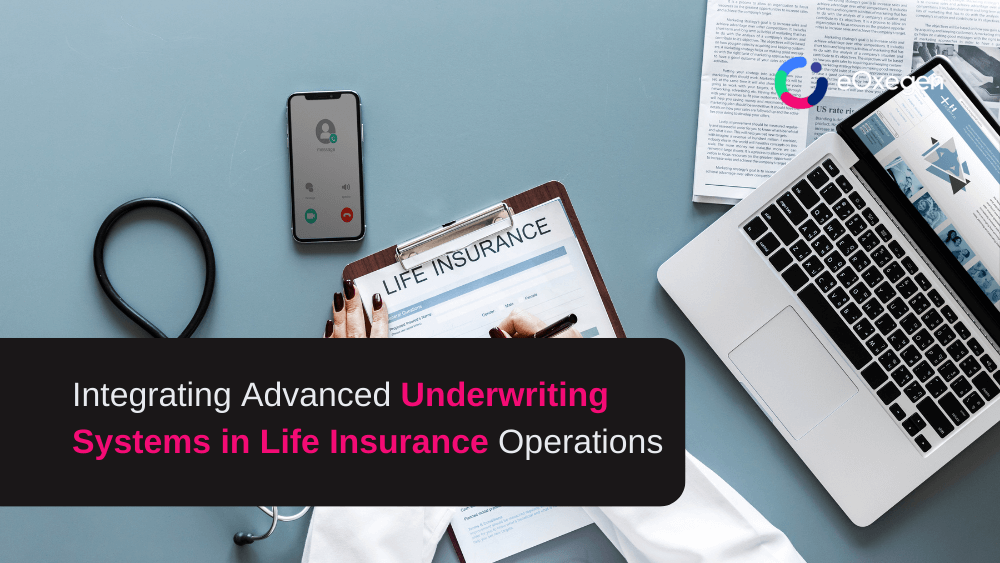Maximizing Efficiency: Integrating Advanced Underwriting Systems in Life Insurance Operations
10 Feb, 2024

In the dynamic realm of the insurance industry, efficiency has gone from being a mere objective to an absolute necessity. In essence, life insurance is one of the key pillars in financial planning that is undergoing a significant transformation. Consequently, there is a paradigm shift in how life insurance operations are conducted after the assimilation of advanced underwriting systems.
During this period of rapid change, these advanced underwriting systems which are frequently automated using complex software have become its early adopters. They are not simply tools but architects of a new underwriting landscape. This seamless integration metamorphoses an archaic concept called risk assessment and policy issuance into something precise and efficient for life insurance purposes. The management of technology and underwriting expertise leads to situations where data analytics interplays with decision-making processes thereby assuring life assurance with the potentiality of becoming more than just a financial backstop or even a model of operating capabilities that will be notable in the years to come.
The Rise of Automated Underwriting Systems
Automated Underwriting System for Life Insurance
The advent of automated underwriting system for life insurance marks a pivotal moment in the industry's evolution. These systems leverage cutting-edge technology to streamline and expedite the underwriting process, from risk assessment to policy issuance.
Efficiency Through Automation
The cornerstone of these advancements lies in the ability to automate complex underwriting tasks. Gone are the days of tedious, manual processes; instead, automated life insurance underwriting systems are designed to swiftly analyze vast datasets, assess risk factors, and generate precise underwriting decisions.
The rise of automated underwriting systems is not just a technological evolution; it is a reimagining of how life insurance operations can be conducted. It's a journey where efficiency, accuracy, and innovation converge to shape a future where the underwriting process is not a hurdle but a seamless and sophisticated orchestration of technology and expertise.
Key Features of Automated Insurance Underwriting Software
Risk Assessment Precision
The leading edge of risk assessment is represented by automated life underwriting, where a new level of precision is established in the standards of this industry. It is more than just another traditional method; it entails using sophisticated algorithms to navigate the complexities of health records, personality traits, and other important data on the applicants. Consequently, it not only ensures that risk evaluation becomes highly accurate, but also sets a solid basis for a more refined underwriting process.
What makes recent developments in automated underwriting so important? The answer lies in the ability of this technology to employ advanced algorithms. As such, intricate health records about an individual’s lifestyle as well as other relevant information are examined with even greater scrutiny than before by these complex systems to make them much better than older ways of viewing underwriting risks. This comprehensive analysis ensures that risk assessment moves beyond mere surface observations and delves deep into complexities that define an individual’s risk landscape.
Speed and Timeliness
Automated underwriting systems are like the heart pumping blood (e.g. speed). These systems are real-time data processing due to its features. This method facilitates a quick underwriting process that enables instant decision-making.
The impact of being fast goes beyond just operational efficiency as it directly affects customer experience. When you automate the underwriting process, time spent from submission of an application to approval of a policy is greatly reduced. Through this, not only is there customer satisfaction but also the overall workflow is expedited hence bringing about an efficient workflow that brings together efficiency and customer orientation.
Data Integration Capabilities
Automated insurance underwriting software is highly effective because it can easily blend with various data sources. The inclusion in the system beyond the traditional type of underwriting allows for the system to be able to access and dissect different types of information. By covering everything from medical records to credit history, one experiences a more comprehensive journey through the policies thereby offering insights through various sources.
Benefits of Automated Life Underwriting
Enhanced Customer Experience
The speed and efficiency brought by automated life underwriting contribute significantly to a positive customer experience. Applicants receive quicker decisions, reducing the waiting period and enhancing overall satisfaction.
Risk Mitigation
The precision of automated underwriting systems minimizes the likelihood of errors and oversights, leading to more accurate risk assessments. This, in turn, enables insurers to better mitigate risks and ensure the financial stability of their portfolios
Operational Streamlining
Integrating automated life underwriting into insurance operations streamlines internal processes. By automating routine tasks, underwriters can focus on more complex cases, fostering a more efficient allocation of resources.
The Future Landscape
As technology continues to evolve, the trajectory of automated underwriting systems is poised for even greater advancements. The industry can anticipate continuous refinement of algorithms, increased integration with emerging technologies like artificial intelligence, and a broader scope of data utilization.
Conclusion
The integration of advanced underwriting systems, especially automated life underwriting, is a game-changer for the life insurance sector. It's not just about efficiency; it's about delivering a more responsive, customer-centric, and risk-savvy insurance experience. As the industry embraces these innovations, the future holds the promise of a more streamlined, accurate, and technologically empowered landscape for life insurance operations.
Recent Articles
- How do Big Insurers Engage with the New-Age InsurTech Companies?
- Insurance Management System Integration: Maximizing Efficiency and Performance
- Will Blockchain Technology Reshape the Insurance Market?
- The Future of Health Insurance: Predictive Analytics and AI
- Buy or Build Insurance Software? A Game-Changing Question in Insurance Industry